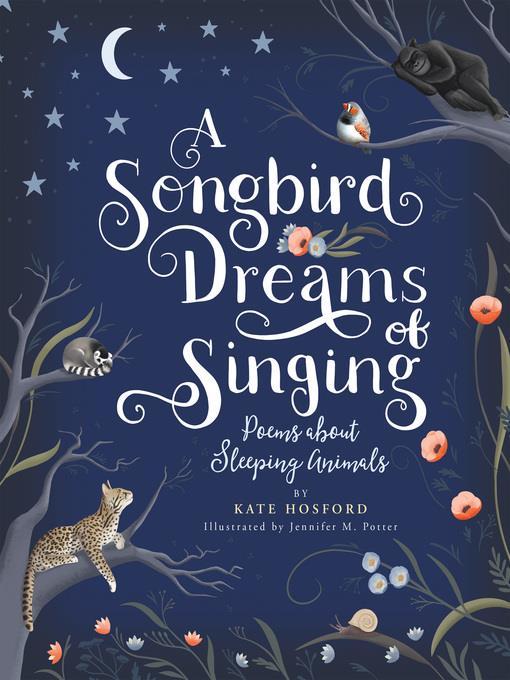
A Songbird Dreams of Singing
Poems about Sleeping Animals
کتاب های مرتبط
- اطلاعات
- نقد و بررسی
- دیدگاه کاربران
نقد و بررسی

October 15, 2019
Somniferous verses, paired with scientific observations, survey styles of sleep in the animal world. Firmly in control of language and rhyme schemes but varying tone and tempo as she goes, Hosford marvels at the sleep habits of 18 creatures. These range from sperm whales ("Oh mighty mothers of the sea / Why do you slumber vertically?") to fire ants ("You didn't know, perhaps / That this ant takes power naps. / It's quite a short collapse. / (Sixty seconds will elapse.) / How many naps will there be? / About two hundred and fifty-three." In the substantial prose glosses that accompany each short poem, she offers further downtime marvels, such as how some whales sleep head up or head down, or even drift between the two positions, and a tale of a desert snail that was exhibited at the British Museum as an empty shell for four years, then successfully revived. Nor does she leave readers in the dark about how some animals rest parts of their brains in succession or the differences among nocturnal, diurnal, crepuscular, and cathemeral creatures, covering these facts in an opening author's note. In Potter's suitably dreamy, subdued illustrations, floating sea otters hold paws, ocelot cubs nestle in a cozy hollow, a "flamboyance" of flamingos stand one-legged in shallow water, and even an upside-down jellyfish ("It isn't easy to explain / How she's so smart / without a brain") looks drowsy. At once eye-closing and eye-opening. (glossary) (Informational picture book/poetry. 6-9)
COPYRIGHT(2019) Kirkus Reviews, ALL RIGHTS RESERVED.

December 1, 2019
PreS-Gr 3-Each spread in this book has an illustration of an animal sleeping in its natural habitat accompanied by a short paragraph listing resting habits and specific characteristics. On the opposite page, a poem further explains these characteristics. The animals include a wide variety of birds, mammals, fish, and others. Readers learn why sloths sleep up to 16 hours a day and why they move slowly. Dogfish sharks never stop moving, even while at rest. Much of the information is repeated in the author's note, the individual animal highlights, and the glossary. The poems do not offer new knowledge or a unique perspective on each animal. The rhyming stanzas repeat the same facts mentioned in the paragraph under the illustration. Although these poems use the well-known rhyming scheme of ABAB, many of the verses are flat and unemotional. On the other hand, the illustrations are lovely, soft, and fairly realistic. The combination of poems and illustrations might offer creative writing opportunities in a classroom. VERDICT The repetitious nature of the information and the flat poetry weaken the overall strength of this collection.-Susan Lissim, Dwight School, New York City
Copyright 2019 School Library Journal, LLC Used with permission.

























دیدگاه کاربران